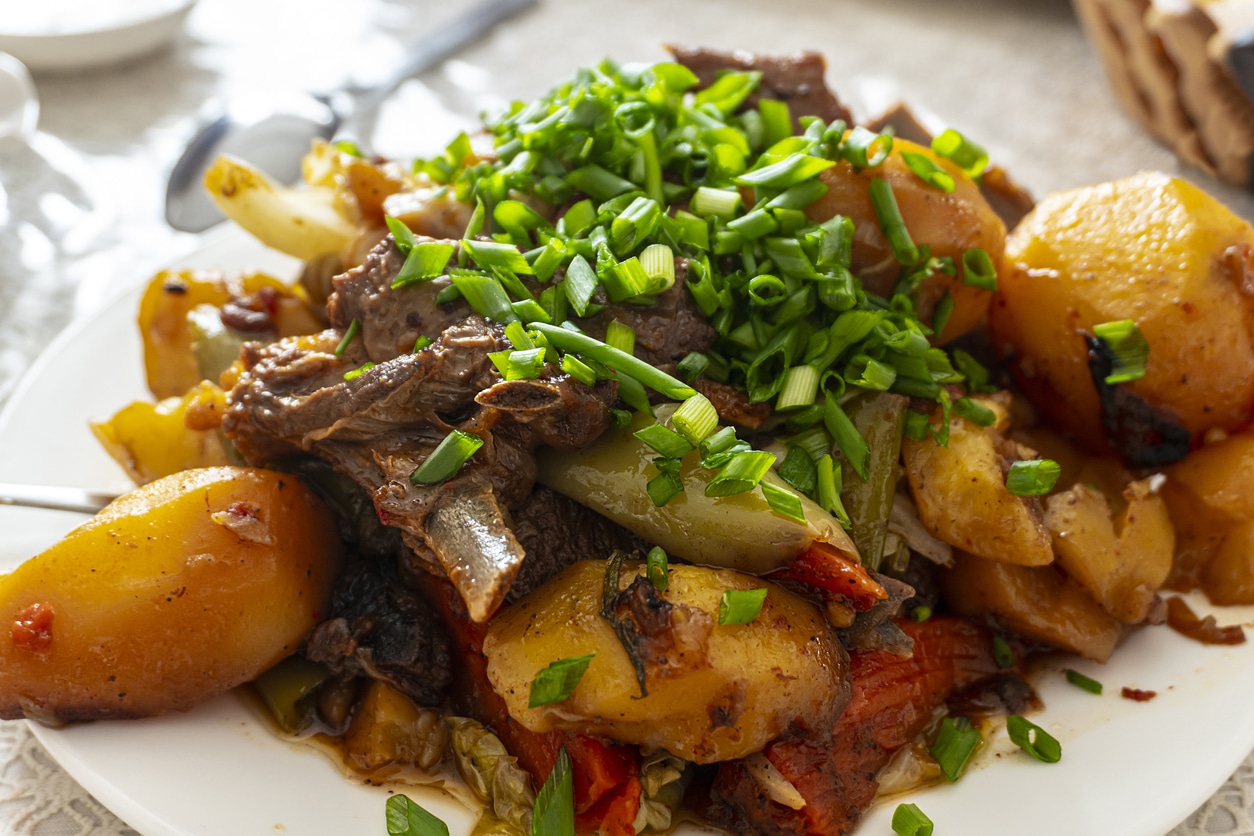Kuurdak (куурдак) is a traditional Kyrgyz dish and one of the oldest recipes found in Central Asia. It is eaten throughout Central Asia and particularly beloved as a national dish in Kyrgyzstan.
This stewed meat dish is one of the easiest and simplest recipes to make. Traditionally, the meat used is mutton (lamb), horse, and/or organ meat cooked in plenty of fat from the animal. Nowadays, you can use whatever meat you like or have on hand, such as beef or chicken, however, fatty meat works best in this dish as the animal fat coats the meat and gives the dish it’s most traditional, lovely flavor.
How Kuurdak Got Its Name
(Почему так называется?)
Kuurdak gets its name from the Kyrgyz word куурулган, which refers to something “roasted” or “fried.” This is exactly what the dish is.
How and When Kuurdak is Eaten
(Как правильно есть куурдак?)
Ancient nomads of Kyrgyzstan and Central Asia prepared this dish with a freshly slaughtered sheep, using the meat while it was fresh and could be cooked quickly. Today, Kuurdak is often cooked as a quick, simple, everyday meal as it comes together quickly. It is also common at celebrations and anytime that a family is expecting many guests, as it can easily be made in bulk. For celebrations, it’s often served as an appetizer before the main dish beshbarmak, along with a side salad of cucumbers and tomatoes.
Preparing Traditional Kuurdak
(Как правильно готовить куурдак?)
The recipe has changed over time and also differs between regions and individual chefs.
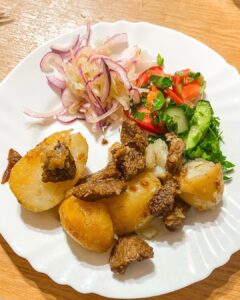
In its most basic form, it is just meat and/or offal fried in its own fat. The most common additions beyond this are just onions and possibly garlic. Thus, with a bit of chopping and sautéing, this dish comes together in no time!
The modern Kyrgyz recipe has made two major changes. First, vegetable oil has taken the place of some animal fat. Ancient nomads would have used vegetable oil sparingly, if it all, preferring animal fat as the much more readily available ingredient. Without oil, fat is needed to ensure that the meat can evenly and deeply cook in the pan or pot.
Fat also allowed the kuurdak to be better preserved. With the addition of an extra layer of fat, the dish is preserved well enough to take for travel or even preserved for winter, so long as the meat itself is not at all exposed to air. Today, however, preserving meat is not as much of a necessity and vegetable oil is relatively cheap, readily available, and allows for faster cooking times.
The second major change is what makes Kyrgyz kuurdak really stand out among other Central Asian variants. While both garlic and onions likely originated in Central Asia and were thus available to ancient nomads, the potato, which originated in the Americas, was only introduced in the 19th century.
Krygyzstan’s soil and climate are not unlike those found in Idaho, America’s main potato-producing state. As potatoes flourished in Kyrgyzstan, they became a staple in many Kyrgyz and Central Asian dishes, including kuurdak. Potatoes are today so popular in this region, that Central Asians sometimes call them “second bread,” as bread is a staple found on nearly every Central Asian dinner table. Tiny Kyrgyzstan is today the world’s 10th largest producer of the tubers.
Thus, the traditional recipe of Kuurdak has evolved, particularly in Kyrgyzstan, to include the addition of potatoes which has enriched the dish’s texture and enhanced the flavor of the meat.
Also, the star of the show in this recipe, in our opinion, are the onions, sautéing the onions and having the flavor melt with the meat and potatoes really gives this dish flavor and balance. This recipe calls for one large onion, however, feel free to add more (or less) onion as you see fit for your personal tastes.
Other regional variations include the use of sheep offal (often without meat) in Kazakhstan. Potatoes are less common in Uzbek and Turkmen variations.
Let’s Cook Kuurdak!
(Давай приготовим!)
| Куурдак по кыргызски | Kyrgyz Kuurdak |
| Ингредиенты:
Приготовление Куурдак 1. Нарежьте одну большую луковицу соломкой или кольцами (отделите ¾ луковицы для приготовления и ¼ луковицы для начинки). 2. Зубчики чеснока нарезать небольшими кусочками. 3. Нарежьте 500 г говядины или баранины на мелкие кусочки (лучше всего подойдут кубики размером 3 см). 4. Добавляем к мясу соль и перец (примерно по ¼ ч.л.) 5. Очистите и нарежьте кубиками по 3 см 4 картофелины среднего размера. 6. Обжарьте мясо в 15 мл масла в большой кастрюле, пока оно не обжарится со всех сторон. 7. Добавьте в кастрюлю ¾ луковицы и чеснок и обжаривайте, пока лук не станет золотисто-коричневым. 8. Добавьте в кастрюлю кусочки картофеля, затем налейте в кастрюлю 1 стакан воды. 9. Накройте крышкой и дайте постоять 30 минут. Время от времени проверяйте воду в горшке, при необходимости добавляйте больше воды. Когда кусочки картофеля и мясо станут мягкими, блюдо готово! 10. Выложите на тарелку оставшиеся ¼ ломтика лука. 11. При необходимости добавьте соль и перец. |
Ingredients:
Preparing Kuurdak 1. Slice one large onion into strings or rings (separate ¾ of the onion for cooking and ¼ of the onion for topping) 2. Chop cloves of garlic into small pieces 3. Slice 500 gr of beef or lamb into bite sized pieces (3 cm cubes work perfectly) 4. Add salt and pepper to the meat (about ¼ tsp each) 5. Peel and chop 4 medium-sized potatoes into 3 cm cubes. 6. Sauté meat in 15 ml oil, in a large pot until seared on all sides. 7. Add ¾ onion and garlic to the pot and sauté until onions are golden brown. 8. Add potato pieces to the pot, then pour 1 cup of water into the pot. 9. Cover and let cook for 30 minutes. Check the water of the pot occasionally, add more water if needed. When the potato pieces and meat are soft, the dish is ready! 10. Plate dish and top with remaining ¼ onion slices 11. Add additional salt and pepper if needed. |
Our Favorite Kuurdak Videos
The video below was made for Kyrgyz tourism and is set in a local Kyrgyz village where a local teaches travelers how to make kuurdak. Note that they use the term “kara-kuurdak,” which litterally translates to “black-fried.” In most sources, kara-kuurdak refers to kuurdak that contains only meat and fat (without onions). Here, this specific use of the term, by a Kyrygz native, seems to refer to kuurdak without potatoes, which probably shows how integral the potato has become for the Kyrgyz.
Below is a recipe for Kazakh kuurdak, using offal. The woman speaks in Russian, but there are English subtitles available.
Below is a very simple video with a Kyrgyz-speaking cook and Russian-language supporting text. Everything is clear, however, from the very simple movements of the video.
You Might Also Like
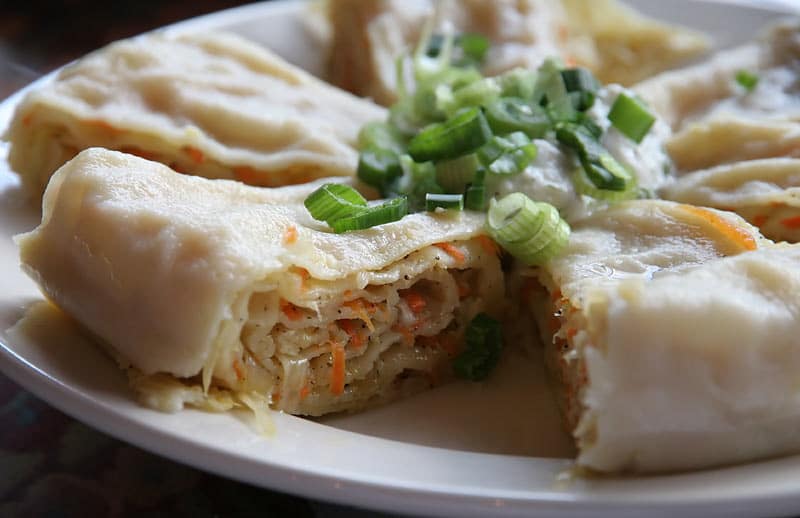
Oromo, Orama, Khanum: A Turkic Pumpkin Delight
For those obsessed with all things pumpkin — pumpkin pie, pumpkin ice-cream, pumpkin-spice lattes — oromo (оромо) is sure to please. Oromo is a rolled, layered, steamed pastry that comes with various fillings (pumpkin being common and our favorite). It evokes everything we love about pumpkin season back home in the States. This main dish […]
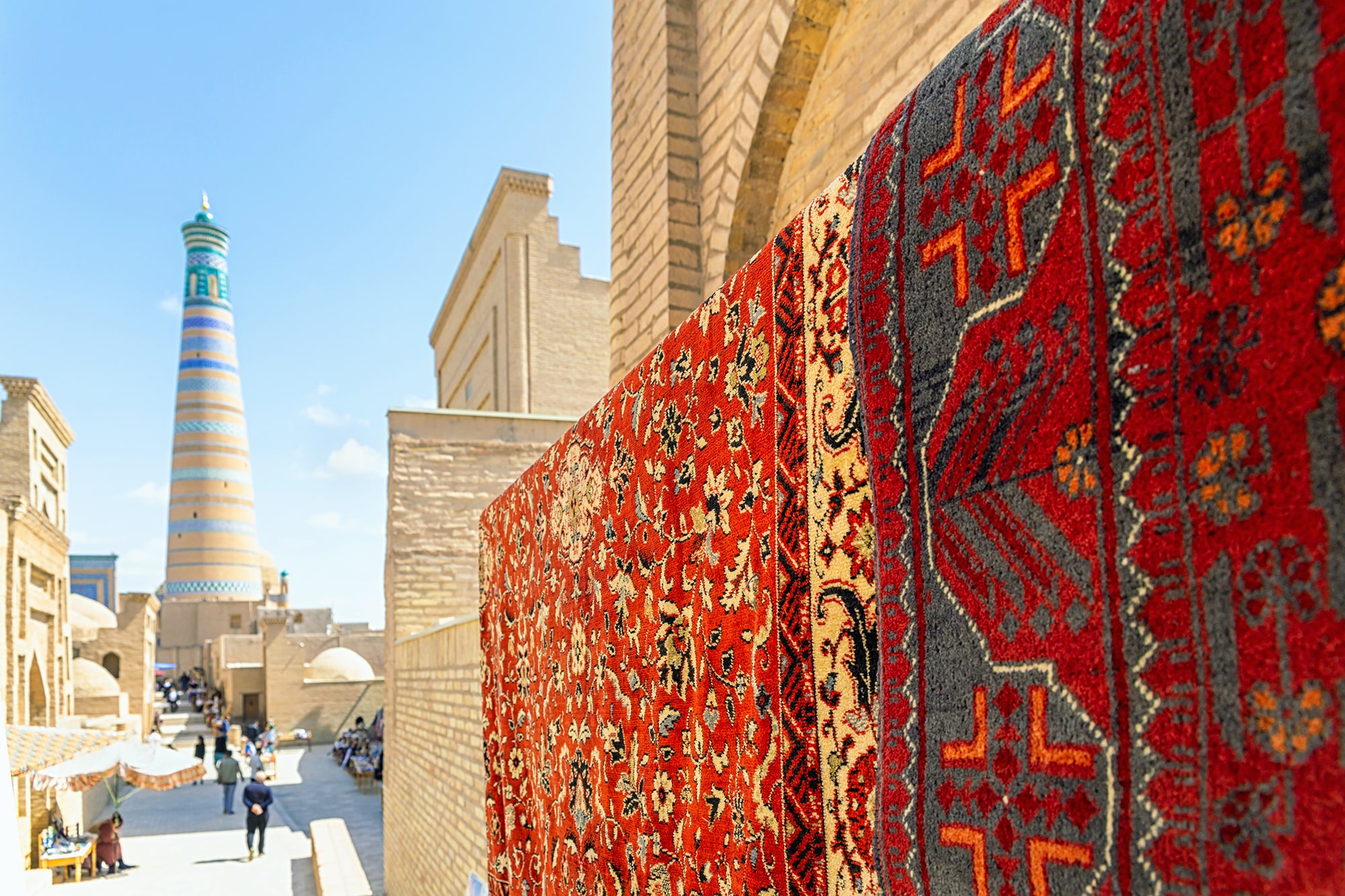
Knots of Culture: Central Asia’s Carpet Weaving Heritage
Central Asia’s rich tradition of carpet weaving reflects the region’s history, culture, and identity. From the ancient nomads of the Pazyryk Valley to the artisans of Kyrgyz yurts and the urban weavers of Samarkand, carpets have long served both practical and symbolic functions. Their materials, techniques, and motifs reflect centuries of interaction between nomadic and […]
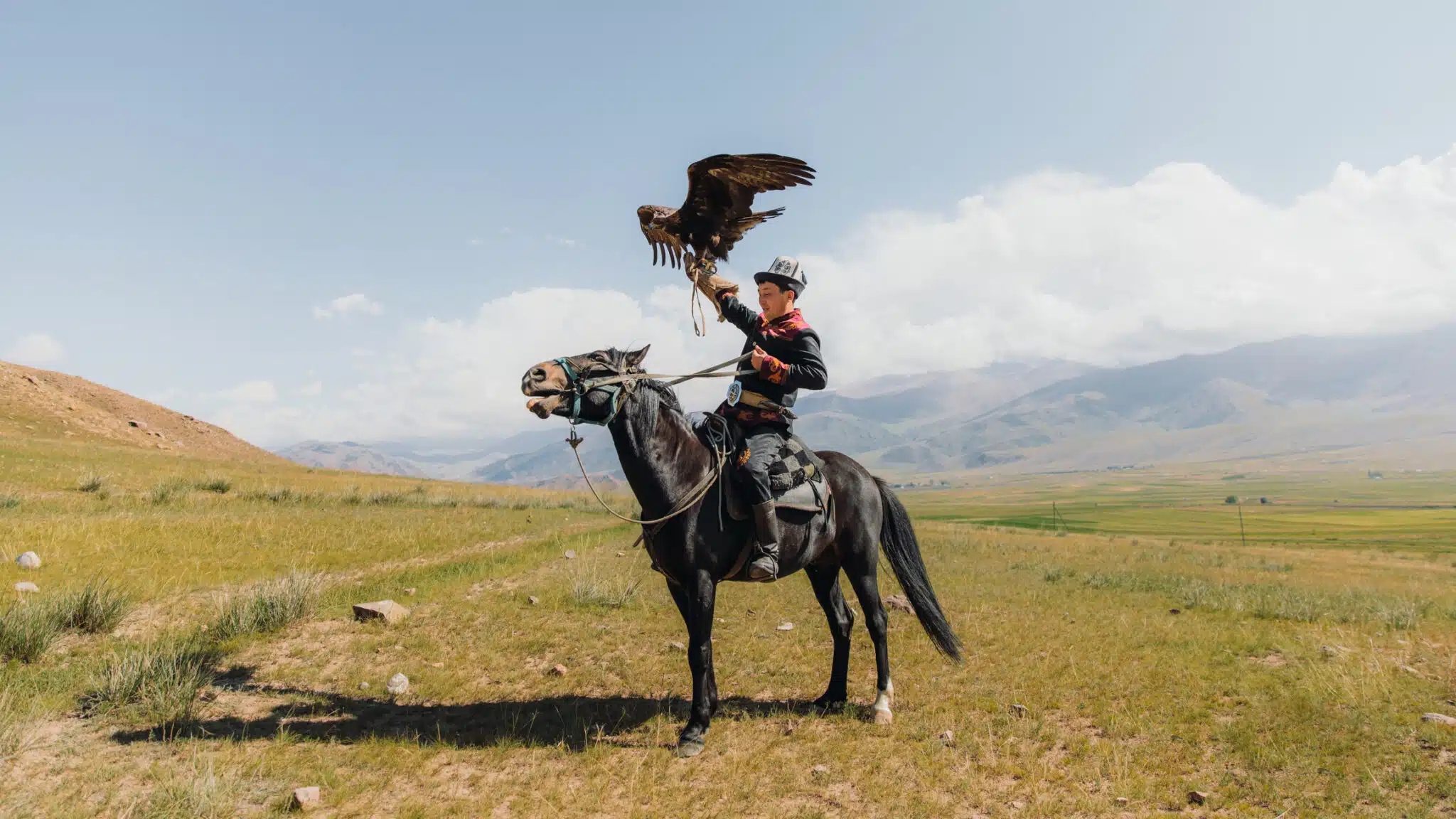
The Talking Kyrgyz Phrasebook
The Talking Phrasebook Series presents useful phrases and words in side-by-side translation and with audio files specifically geared to help students work on listening skills and pronunciation. Below, you will find several useful phrases and words. To the left is the English and to the above right is an English transliteration of the Kyrgyz translation. […]
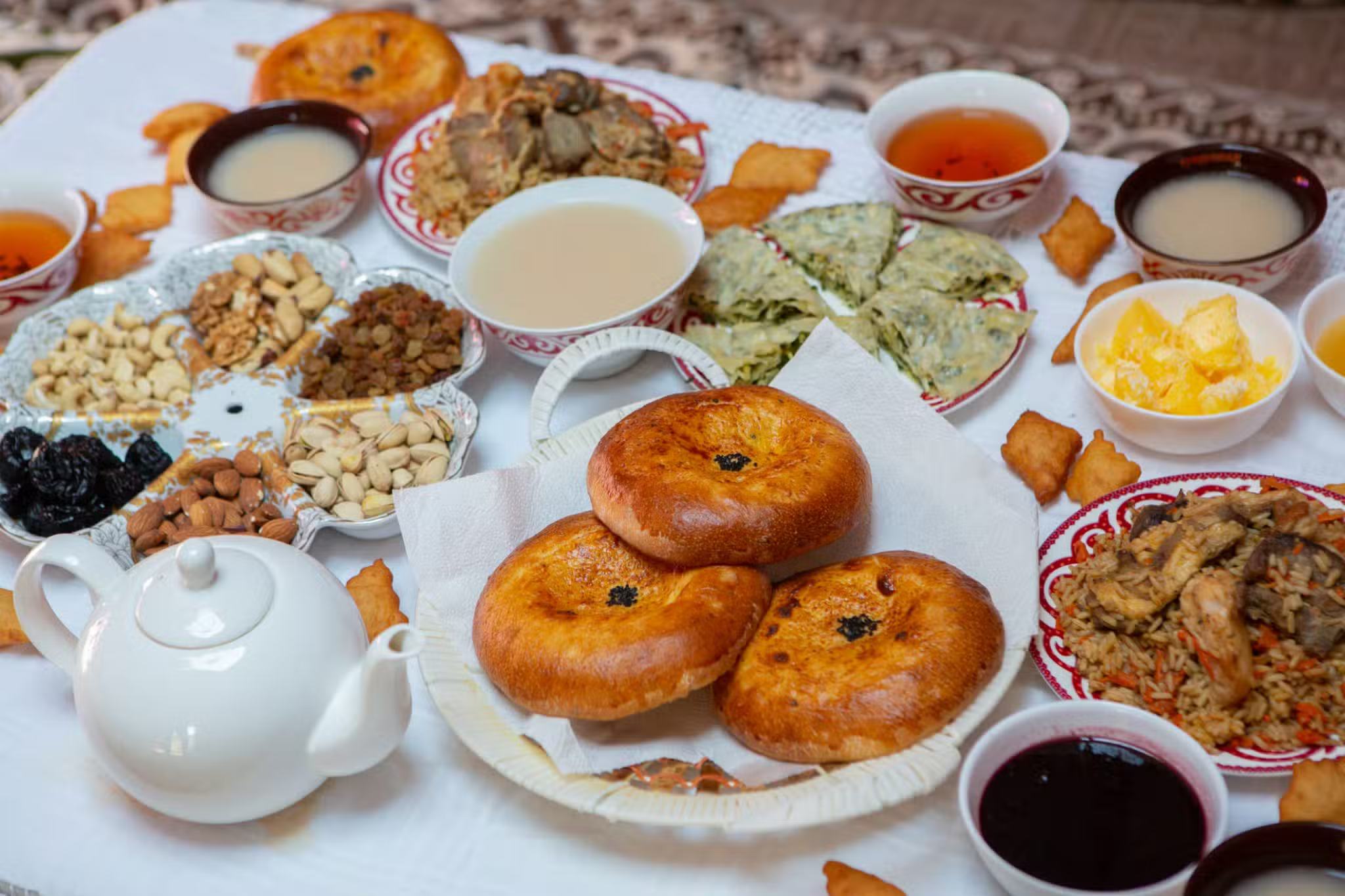
The Kyrgyz Food Dictionary
Kyrgyz cuisine reflects the country’s heritage of pastoral nomadism. Life was spent moving livestock from pasture to pasture and living in collapsible, transportable yurts. The livestock themselves were the primary, sustainable food source. Everything else was either gathered from the land or traded for. The Kyrgyz did not engage in intensive settled agriculture until forced […]
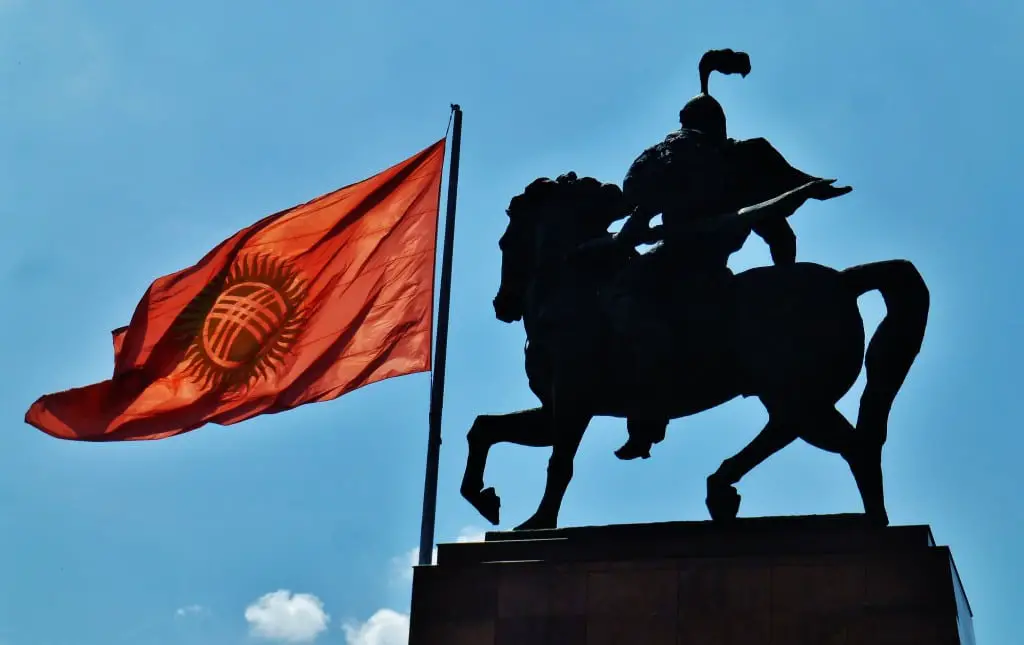
Manas and the Manaschi: Foundations of the Kyrgyz Soul
There are few essential things to know about Kyrgyzstan. One of these is the country’s folkloric hero, Manas. You’ll find nearly everything in Krygyzstan is named after him: the main airport, national parks, major streets in nearly every city and town, and even karate clubs and movie theaters, not to mention the statues of him […]

